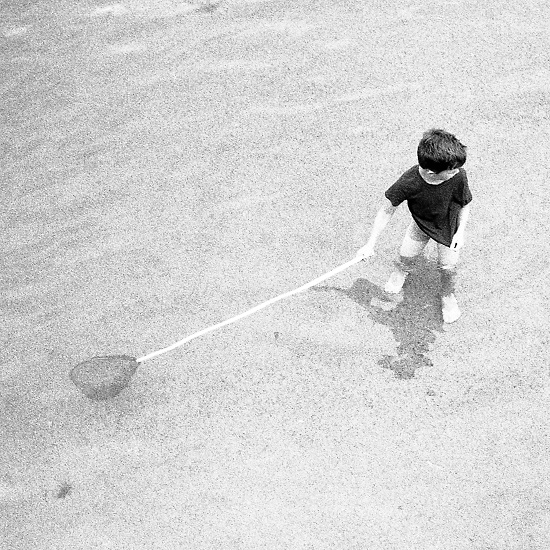
How many songs by Scottish bands feature the word “rain”? ‘Raintown’, ‘Tinseltown in the Rain’, ‘Why Does it Always Rain on Me?’, and that’s before we even get to Dean Owens’ brilliant ‘Raining in Glasgow’ and all the rest. There’s a reason for that, of course, the same reason why ‘The Flood’ opens with the song ‘Edinburgh Rain’. The message isn’t always negative; rain has the power to clear the air and “Wash my blues away”.
Wayward Jane (Dan Abrahams, Sam Gillespie, Rachel Petyt and Michael Starkey) is an interesting idea, combining the basic elements of an Appalachian string band with some traditional Scottish folk influences. The end result is an original sound that’s somewhere between a string band , folk troubadour and ceilidh band mixing the influences subtly to create a sound that’s best described by the title of one of the instrumentals, ‘Doucement’ which translates as gently or softly. Wayward Jane take some of the harder edges away from the string band and soften them with Sam Gillespie’s wooden flute playing and laid-back performances.
The album’s a mixture of songs and instrumentals, mainly originals, but with the addition of a couple of reworkings, one the traditional song ‘Little Satchel’ and the other a fairly traditional string band version with lovely four-part harmonies of ‘Shake Sugaree’, the Elizabeth Cotten song that’s becoming an Americana standard.
To come back to that rain, the album has a watery theme running through it, including the banjo and fiddle-led ‘Didn’t It Rain’, telling the all-too-familiar story of catastrophic weather events in the Southern states. There are also three pieces back-to-back in the middle of the album with aquatic themes; ‘Crossing Over Water’ begins with two guitars and builds with fiddle and banjo to four-part instrumental harmony before Rachel Petyt comes in with a very traditional folk vocal, ‘The Flood’ is a typical string band instrumental giving all the players a chance to demonstrate their skills and ‘Down by the River’ has a country feel with unison banjo and fiddle and lovely harmonies.
What makes ‘The Flood’ so original is the varying textures created by the playing and the range of vocal styles. The instruments are used in every possible combination (particularly with the addition of wooden flute) to make each piece distinctive. It’s a lovely album with pleasant surprises wherever you turn.
‘The Flood’ is out now on ‘Down The River Records’ (WJ003) and you can still see the band at these tour dates.
Here’s the video of ‘Crossing Over Water’:
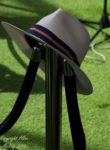 There’s no other way of saying this; 2020 has been an awful year and it’s been hard to take any kind of consolation from it. Anyone in the world of music has had to look long and hard to take any positives out of this situation. For many of us, it’s been an opportunity (or maybe a necessity) to look in the rear-view at some of the things we did in the past; gigs that we went to, albums that we bought and people that we met. I’ve moved around the country a fair amount and, in the era before media players and streaming, I had to limit the music I could move around with me. I’m not saying I was limited to five albums or, later, CDs, but these are albums that always made the cut and they’ve still had the same comfort blanket value through two lockdowns. In chronological order:
There’s no other way of saying this; 2020 has been an awful year and it’s been hard to take any kind of consolation from it. Anyone in the world of music has had to look long and hard to take any positives out of this situation. For many of us, it’s been an opportunity (or maybe a necessity) to look in the rear-view at some of the things we did in the past; gigs that we went to, albums that we bought and people that we met. I’ve moved around the country a fair amount and, in the era before media players and streaming, I had to limit the music I could move around with me. I’m not saying I was limited to five albums or, later, CDs, but these are albums that always made the cut and they’ve still had the same comfort blanket value through two lockdowns. In chronological order:
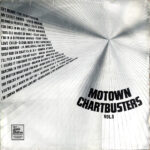 “Motown Chartbusters Vol. 3” – Various Artists
“Motown Chartbusters Vol. 3” – Various Artists
I know; it’s a compilation, but what a compilation. This was the soundtrack of my teenage years; every youth club disco, every party, every time I went to a friend’s house, this album was there. It was perfect timing, with a 1969 release just at the time that I really started to listen to music properly and had a few quid from my paper round to actually buy records.
The Chartbusters series started in 1967; if you’re a cynic, you might accuse Motown of trying to recycle material but it is the music business and it’s fair to say that this series was packed with hits. It was basically a singles industry at that time, so a compilation from a successful company made a lot of sense. So why Vol. 3? Well, the sleeve design evolved as the series progressed, reflecting current social themes, but Vol. 3 was the one where the designers nailed it; it’s simple, bold and incredibly striking and the musical content lived up to the standard of the design.
If a sixteen-song album starts with Marvin Gaye’s “Grapevine” and ends with Smokey’s “Tracks of my Tears”, there’s a lot of wiggle room for the other fourteen songs. Throw in a couple of Stevie Wonder classics, The Temptations’ “Get Ready” and Edwin Starr’s “Stop Her on Sight” and you’ve already got a classic compilation. Take a look at the entire album and it’s studded with classics and minor classics. That’s why it will always have a place in my elite albums.
I bought this the week it was released in September 1977 and took it with me to Dundee for my second year at University. I was in a shared room, but it was with Kev, my room-mate from my first year. We both played guitar and had some musical tastes in common; thankfully Steely Dan was one of those shared tastes. “Aja” was played a lot and we may have smoked some recreational substances, which may have enhanced the listening experience. In my final two years, I had my own room and, again, “Aja” didn’t stay in its sleeve very long. It was starting to look a little worse for wear. You can read the next part of this story in this piece; I don’t want to do it in detail again here. Let’s just say it burned “Aja” into my consciousness and since that time the album’s been a constant companion.
I’d been a Dan fan since the early days and, by this time, I knew to expect the unexpected but this album was something else. They had seven beautifully-constructed and slightly sleazy songs (ok, maybe more than slightly sleazy) and spent studio time with the best session musicians in the world putting together versions of the songs, picking out the seven favourites for the album. They started as jazzers playing rock and with “Aja” they arrived at jazzers playing jazz or maybe jazz-funk; going back to their roots. Like all of the albums mentioned here, this should be in everyone’s collection. It was certainly in the collection of the next band.
I’m Scottish; I’m proud to be a Scot and I used to love the times when the music industry radar periodically located Scotland on the UK map. The mid-to-late eighties was one of those periods; Deacon Blue were one of the bands to be signed and they’re still recording and gigging today. I saw them at Cornbury a couple of years ago and they sounded great with songs covering a period of thirty years. The band members mostly have new day jobs now; Ricky Ross is a radio broadcaster and Dougie Vipond is a TV presenter with BBC Scotland, but that’s all irrelevant when the sticks click and the band fires up.
I bought “Raintown” on vinyl originally and I still have that copy now. The title song was a tribute to Glasgow that spliced Blue Nile with Springsteen to create a wide canvas sound that came to define the band. As much as I loved that song, and the anthem “Dignity”, it was “When Will You (Make my Telephone Ring?)” that I connected with. It was a soul song (they even had Jimmy Helms on BVs) and it was over the top and gorgeous. It was part of an album that you needed to listen to from start to finish (turning over the vinyl halfway through), because you wouldn’t want to miss out on the opener “Born In a Storm” or the yuppie tale “Chocolate Girl”.
And you know that the Steely Dan connection is “Deacon Blues” from “Aja”, obviously.
When the Britpop wars broke out, I was missing in action. Why would anyone hitch themselves to bands that were so obviously influenced by sixties pop. Oasis was The Beatles without the subtlety and Blur was an arch Goldsmiths-enabled Kinks tribute band. We had to be better than that and I’d already committed myself to a band that had much more in common with the East Midlands surroundings I knew as a teenager. The band was from Sheffield and the songs reflected life in the North Nottinghamshire/Derbyshire/South Yorkshire area; Blur and Oasis were copying sixties bands while Pulp felt much more like a musical interpretation of Stan Barstow’s short stories.
“His ‘n’ Hers” was the breakthrough album: it wasn’t the album with the anthems that followed it and turned Pulp into an arena and Glastonbury-headlining band. “Different Class” featured “Common People” and “Disco 2000”, both complete bangers and remixed to within an inch of their lives; as much as I loved them, I still identified much more with the characters and the narratives of “Lipgloss”, “Babies”, ”Acrylic Afternoons” and “Do You Remember the First Time?”. This is still my favourite Pulp album and probably my favourite ‘Britpop’ album.
Only a few months after “His ‘n’ Hers” and so different. If Sheffield defined Pulp, then Bristol defined Massive Attack. The first Massive Attack album “Blue Lines” three years earlier was already firmly embedded in my consciousness. “Unfinished Sympathy” was a classic single and Shara Nelson had a perfect voice to front up the songs. Massive Attack wasn’t a prolific band (quality rather than quantity) and by the time “Protection” came along, Shara had moved on, replaced by a mix of singers and rappers including Tracey Thorn, Tricky, Nicolette and Horace Andy. Along with close neighbours Portishead, Massive Attack defined trip-hop, mixing influences from hip-hop and dub, creating a sound that was both ambient and punchy.
The title song has always pushed my buttons; it’s gorgeous. The bass is thunderous (particularly for a slow ballad), while the guitar, keys and vocals are all crystal clear with a shimmering touch of reverb. The mix is full of space and all of the individual elements stand out. And there’s Tracey Thorn’s almost effortless but incredibly powerful vocal. It’s a classic song and it sets the tone for the album; loads of punchy bass and spacy, dubby mixes – trippy even. The kind of music that might accompany a spliff or two. Which takes us back to my second selection.
 Did you hear the one about the radio presenter, the TV presenter, the actress and the music performance teacher? Or, alternatively, Ricky Ross, Dougie Vipond, Lorraine McIntosh and Jim Prime? The members of Deacon Blue have taken time out from the day jobs to release a new album, 25 years after their first, “Raintown”, in 1987. I first heard the band in that year; “When Will You (Make my Telephone Ring)?” was released as a single and I was hooked from the first listen.
Did you hear the one about the radio presenter, the TV presenter, the actress and the music performance teacher? Or, alternatively, Ricky Ross, Dougie Vipond, Lorraine McIntosh and Jim Prime? The members of Deacon Blue have taken time out from the day jobs to release a new album, 25 years after their first, “Raintown”, in 1987. I first heard the band in that year; “When Will You (Make my Telephone Ring)?” was released as a single and I was hooked from the first listen.
The current band are two-thirds of the original line-up; bass player Ewen Vernal is now with Capercaillie (and guested with Love and Money” on their shows last year) and, sadly, guitarist Graeme Kelling died in 2004. So, apart from the obvious 25th anniversary, why release an album in 2012? Because they have a bunch of great new songs and they still love playing together, and that’s good enough for me.
If you bought “Raintown” in 1987 and managed to avoid listening to anything by Deacon Blue since then, “The Hipsters” would sound like the logical next step. The songs are just as strong, probably even stronger, than those on the ground-breaking first album but the overall sound is more immediate and engaging than the very 80s production of “Raintown”. There’s a reason for that, and I’ll come back to it later.
The album opens with “Here I Am in London Town” which harks back to “Raintown” in that the lead-off song on both albums has a stripped-back production, but there’s more to it than that. The opening song on “The Hipsters” looks back to the period just before the release of the debut album when all of the members of the band were “waiting for the world to begin again”. The title track, “The Hipsters” is one of the best singles I’ve heard this year and a great summer song; it’s just a shame that we didn’t have a summer to do it justice. It’s also ironic because Deacon Blue were never hipsters and no amount of sales would make them hip; but that’s probably why we loved them so much. Just in case we missed that particular bit of irony, the balance is redressed with “The Outsiders” which is the position they were most always most comfortable with: “this world seemed so much lighter, when we were the outsiders”.
It’s difficult to pick standout tracks from the album because the songs are all superbly crafted and the arrangements work perfectly to bring the songs to life, so all I can do is point you in the direction of some of my personal favourites. “The Rest” is a feelgood barnstormer which sounds like the E Street Band at full throttle with great piano lines and sus4 guitar chords driving the chorus along, while “It’ll End in Tears” has a really bouncy feel but an ultimately downbeat message. The final song “Is There No Back to You?” is a gorgeous lovelorn ballad which brings the album to a melancholy but fitting close.
The songs in this collection are the work of a mature and confident songwriter with nothing left to prove and a lifetime’s experience to draw on. The material on “Raintown” was good by any standards but the relationship songs, apart from “When Will You (Make my Telephone Ring?)”, were always at a slight distance from the subject matter or in the third person. It felt like you were hearing a snatch of a conversation from the flat next door or catching a glimpse of a scene through a restaurant window. On “The Hipsters”, the narrative of the relationship songs is in the first person and we’re drawn into the heart of the situations, which gives the songs much more power.
The arrangements all work perfectly to enhance the songs and range from the sheer power of “The Rest” through the ‘60s pop feel of “That’s What We Can Do” to the minimal feel of “Here I Am in London Town” and “Is There No Way Back to You?”. And it’s just possible that I’m over-interpreting, but is Ricky Ross paying tribute to some of his songwriting heroes here? The production and/or vocals on three of the songs have a familiar feel; “Here I Am in London Town” is very Neil Young, “The Rest” is pure Springsteen (with a hint towards the end of Big Country) and “Is There No Way Back to You?” has a feel of “Jealous Guy” era John Lennon. Despite the usual stories of star-crossed lovers (“Turn”, “She’ll Understand”, “Laura from Memory”, It’ll End in Tears” and “Is there No Way Back to You?”) the overall feel of the album is still uplifting because of the relationships in “Stars” and “The Rest” which, against all the odds, end happily, and the sheer exuberance of “The Hipsters” and “The Outsiders”. This is a great collection of songs, great arrangements, great performances and a great production.
Going back to the immediate and engaging sound of the album; there’s a very good reason for it. The songs were thoroughly rehearsed before the band went into the studio and recorded them live; that’s quite a brave and unusual move these days and it’s paid off because they’re good enough and confident enough to perform to that level. Before The Beatles, that’s how everyone recorded and maybe there’s still a place for that immediacy now; it was good enough for Joe Meek.
This album is the best, most moving collection of songs I’ve heard this year and I’ll be listening to it for years to come. What more can I say?
The single is released on September 23rd, followed by the album on the 24th.


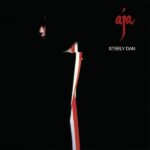 “Aja” – Steely Dan
“Aja” – Steely Dan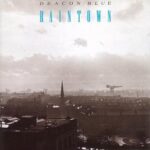 “Raintown” – Deacon Blue
“Raintown” – Deacon Blue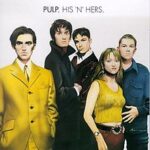 “His ‘n’ Hers” – Pulp
“His ‘n’ Hers” – Pulp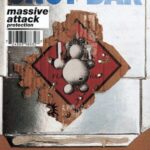 “Protection” – Massive Attack
“Protection” – Massive Attack